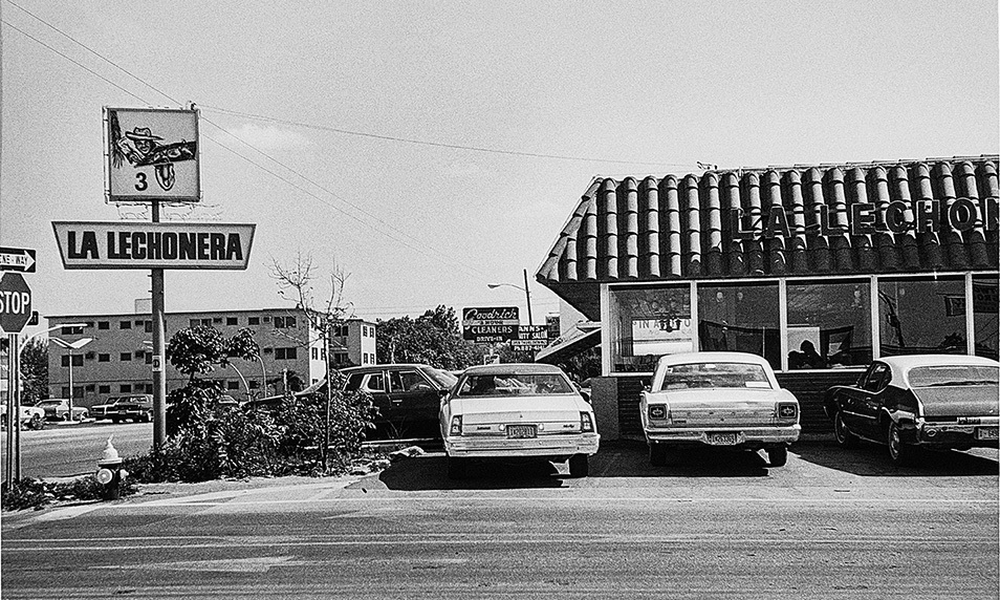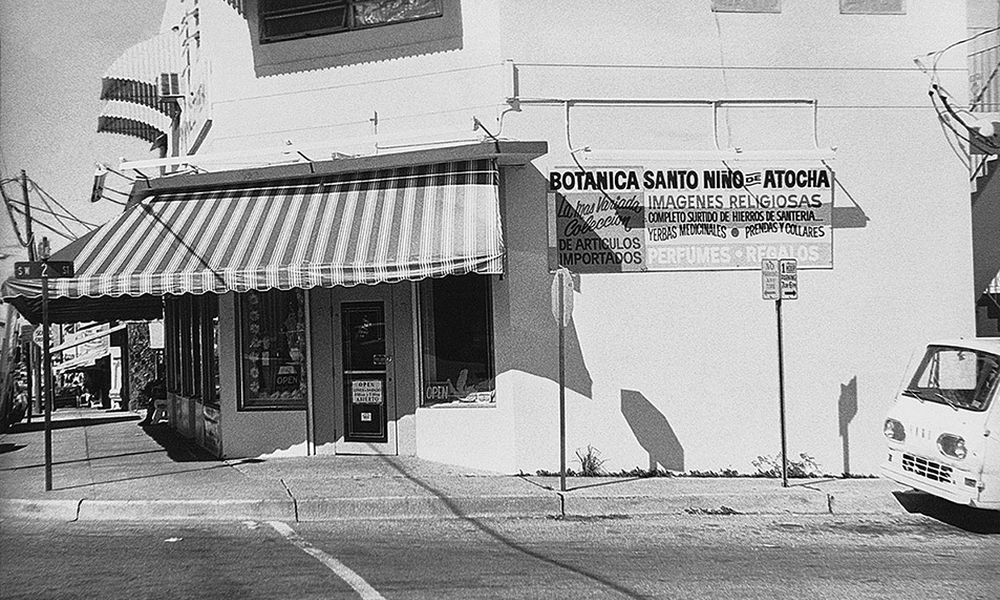Remaking Miami:
Josefina Tarafa’s Photographs of the 1970s
September 5, 2020–January 31, 2021
Cuban Legacy Gallery
MDC Special Collections at the Freedom Tower, Miami
October 24, 2022–March 15, 2023
Building 5, Room 5107
North Campus, Miami Dade College
11380 NW 27th Avenue, Miami
September 18–December 13, 2023
Building 3, Room 3113
Eduardo J. Padrón Campus, Miami Dade College
627 SW 27th Avenue, Miami
January 10–February 28, 2024
Art Gallery
Hialeah Campus, Miami Dade College
1780 W 49th Street, Hialeah
Remaking Miami: Josefina Tarafa’s Photographs of the 1970s
During the 1970s, the photographer, editor, and philanthropist, Josefina Tarafa (born Havana, Cuba, 1907–died Miami, Florida, 1982) created an exceptional body of images that picture Miami transformed by the arrival of her fellow Cuban immigrants. The first exhibition dedicated to Tarafa’s photography, Remaking Miami includes thirty posthumous prints, made from photographs in an archive of approximately one hundred and fifty original images, now held by the Lydia Cabrera Papers at the Cuban Heritage Collection of the University of Miami Libraries.
In Cuba during the 1940s and 1950s, Tarafa worked as a documentarian, exploring national identity by photographing the architecture of nineteenth-century sugar mills and, in the company of her close friend, the anthropologist Lydia Cabera, Afro-Cuban religious rituals. Exiled, Tarafa continued her visual investigation of lo cubano (Cubanness) in Miami. By the early 1970s, the Cuban community comprised a majority of Miami's immigrants.
Tarafa’s images reveal cultural, economic, and social dimensions of the then-young Cuban exile community. emphasizing the transformative relationship between immigrants and their environment. She often focused on the overwhelming appearance of all kinds of signs written in Spanish and placed in public spaces, especially advertisements for businesses or service providers. Some of these show Cuban place names or make reference to businesses previously existing in Cuba, implying a continuity between the island and Miami. Often, the depicted signs refer to the long tradition of humor in Cuban advertising: Facade of Chapistería y Pintura 3 Cubanos Refugiados (Three Cuban Refugees Paint and Body Shop) or Sign Promoting the Services of a Cuban Mechanic with 105 Years of Experience.
Combining sharp anthropological observation with artistic vision, Tarafa’s tour of the varied small businesses set up by Cuban immigrants shows the entrepreneurial spirit of the exiles, who arrived in the United States as refugees without money or belongings. Her visual strategy allows Cubans to speak for themselves, enunciating their habits of consumption, their tastes and expectations. They define their ways of becoming an ethnic presence in the city that they will turn into their most important urban center outside of Cuba, the city they will remake.
Remaking Miami: Josefina Tarafa’s Photographs of the 1970s is curated by José Antonio Navarrete and organized by the Cuban Legacy Gallery, part of MDC Special Collections at the Freedom Tower, in collaboration with the Lydia Cabrera Papers, Cuban Heritage Collection, University of Miami Libraries, Coral Gables. The prints were produced in collaboration with MDC Special Collections. Exhibitions in the Cuban Legacy Gallery are made possible by the generous support of the Miami-Dade County Department of Cultural Affairs and the Cultural Affairs Council, the Miami-Dade County Mayor and Board of County Commissioners; and the State of Florida, Department of State, Division of Cultural Affairs and the Florida Council on Arts and Culture.
Josefina Tarafa, Facade of Botánica Santo Niño de Atocha, S.W. 2nd Avenue, Miami, Florida, 1971. Lydia Cabrera Papers, Cuban Heritage Collection, University of Miami Libraries, Coral Gables, Florida.
Josefina Tarafa, Facade of Ebenezer, a shipping agency sending clothing and medicines to Cuba, Miami, Florida, 1970s. Lydia Cabrera Papers, Cuban Heritage Collection, University of Miami Libraries, Coral Gables, Florida.
Josefina Tarafa, Facade of La Casa de las Viejas Store, 62 N.E. 1st Street, Miami, Florida, 1971. Lydia Cabrera Papers, Cuban Heritage Collection, University of Miami Libraries, Coral Gables, Florida.
Josefina Tarafa, Pick-up window of Mi Tío Cafetería, Miami, Florida, 1971. Lydia Cabrera Papers, Cuban Heritage Collection, University of Miami Libraries, Coral Gables, Florida.


